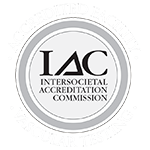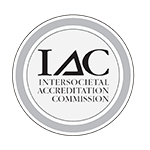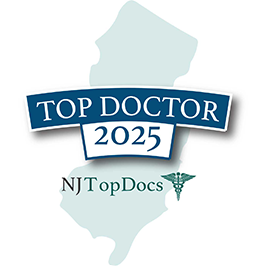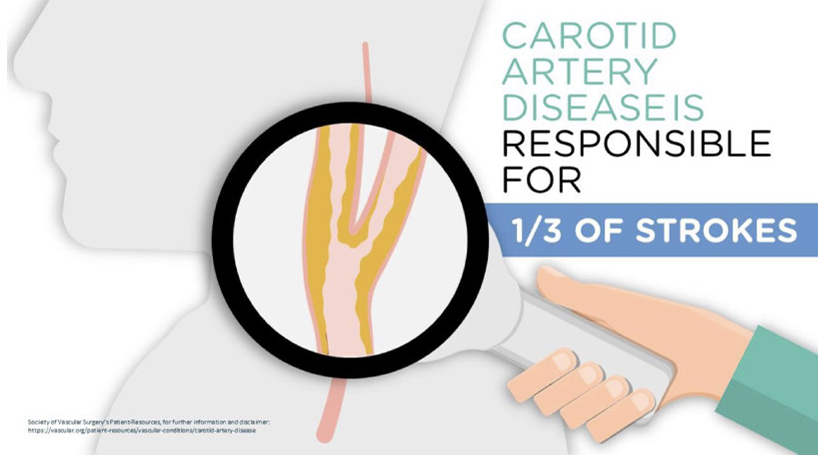
The human body is a fantastic piece of engineering, with blood vessels and arteries that deliver and take oxygen-rich blood from one organ to another. Of all arteries, the carotid arteries are some of the most important because they provide blood to your face, head, and brain.
When a carotid artery gets blocked with fatty substances and cholesterol deposits, it can narrow and cause carotid artery disease. Obstructed arteries can increase your risk for stroke, one of the highest causes of death in the United States.
This article will discuss carotid artery disease, how it's diagnosed and treated, and what you can do to prevent it.
What is Carotid Artery Disease?
Your body has two carotid arteries — one on each side of the neck — and they work to supply the brain, face, and head with oxygen-rich blood. When they work well, they are like smooth pipes supplying nutrient-rich blood.
But, when the artery becomes narrowed or clogged by fatty deposits, calcium, or other waste products, it can cause a blockage that leads to carotid artery disease. This blockage is known as atherosclerosis and is the leading cause of carotid artery disease.
Your brain needs a constant supply of oxygen to function correctly, and even a minor pause can create problems. While slightly blocked carotid arteries reduce oxygen flow to the brain, severely blocked arteries can cause a stroke.
A stroke is a medical emergency because the blood supply to the brain is compromised. Strokes deprive the brain of the oxygen it needs for essential functioning, causing permanent damage without proper medical intervention.
Why Do I Have It? Causes and Risk Factors
Atherosclerosis, a condition where fatty deposits build in the inner layer of the arteries and form plaque, is the leading cause of carotid artery disease. The plaque narrows the arteries and can completely block the blood flow to the brain. Unfortunately, you're at greater risk of developing carotid artery disease if you have Peripheral Artery Disease (PAD)1
Your risk for carotid artery disease also increases with age. Other risk factors for developing carotid artery stenosis may include:
- Diabetes
- Genetics - your risk goes up if your parents or relatives have it.
- Age and gender2 - men are more likely to get it before 75, and women are at higher risk after 75.
- Sedentary lifestyle
- Obesity
- Smoking and using other tobacco products
- High blood pressure
- High cholesterol
- Race - although anyone can be at risk, African American and Hispanic people are more likely to develop this disease3
How Can I Prevent Carotid Artery Disease?
The good news is you can slow down the progression or prevent carotid artery disease by making simple changes in your daily activity, such as:- Be more active. Exercise can help your body maintain a healthy weight, lower blood pressure, and reduce your risk for carotid artery disease. Please consult your healthcare provider for their recommendations before starting an exercise regimen. One idea would be to walk 10 to 15 minutes a day.
- Quit smoking. All nicotine products (e-cigarettes included) constrict the blood vessels and decrease blood flow through the arteries.
- Healthy Eating. Make sure to eat many fruits, green vegetables, and high-fiber foods. You should also consume lean meats, skinless chicken and turkey, and include fish in your diet at least twice a week. Cut back on salty, sugary, and processed foods.
- Limit salt in your diet. Excess sodium (salt) can increase blood pressure in people sensitive to sodium. Experts recommend adults eat less than 1,500 mg of sodium every day.
If these non-invasive changes are not enough to control carotid artery disease, your healthcare professional might need to prescribe medication4
- Antiplatelets. Aspirin and dipyridamole are some antiplatelet medicines that help thin the blood platelets so that it's less likely to cause clots.
- Cholesterol medicines. Cholesterol medicines help your liver produce less cholesterol, preventing plaque in the carotid arteries.
- Blood pressure medicine. These medicines slow your heart rate, relax your blood vessels, and help your body eliminate extra fluid, lowering blood pressure.
The Importance of Receiving Treatment
Carotid artery disease often has no symptoms, so if you feel that you or a loved one is at risk for this disease, contact your healthcare professional immediately.Your doctor can conduct several tests to check the health of your carotid arteries. The easiest way is to place the stethoscope over your carotid artery to listen for a sound doctors call "bruit" (pronounced brew-ee). The narrowed artery makes a bruit sound when blood passes through it.
Medical imaging techniques such as ultrasound can also inspect your artery health. This non-invasive treatment uses sound waves to assess blood flow and pressure in your carotid arteries.
If your assessment reveals carotid artery disease, your doctor may prescribe simple lifestyle changes, medicines, or surgery, depending on the disease's severity. We offer all treatment options, including, TransCarotid Artery Revascularization (TCAR), Carotid Endarterectomy (CEA) and Trans-Femoral Carotid Artery Stenting (TF-CAS).
TCAR, compared to traditional open surgery, has:
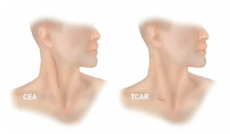
- Less chance of heart attack.
- Less chance of nerve injury
- Shorter procedure
- Minimally invasive approach
- A smaller scar
CEA can provide:
- Effective plaque removal
- Proven track record
- Immediate results
- Long-term benefits
TF-CAS offers patients:
- Shorter hospital stay
- Less painful recovery
- Minimally invasive approach
- Suitable for those with comorbidities
Each of these treatment modalities has its own set of benefits, and the choice of treatment depends on the patient's specific condition and overall health. It's always best to consult with a vascular surgeon to determine the most appropriate option.
If you don't get checked, the plaque build-up can continue without warning until you develop either a transient ischemic attack (TIA or mini-stroke) or a full-blown stroke. Unlike a stroke, symptoms of TIA can go away after a few minutes, but this doesn't mean you should ignore it.
Signs of a Stroke
Be vigilant for the following symptoms of a stroke or TIA.- Sudden numbness, weakness, or tingling on one side of the face, body, arm, or leg
- Sudden loss of vision, blurred vision, or vision difficulty in one or both eyes
- Sudden loss of balance and difficulty walking
- Sudden dizziness
- Sudden severe headache
- Aphasia or difficulty speaking
- Memory problems
- Dysphagia or difficulty swallowing
Lifestyle Changes to Control or Prevent Carotid Artery Disease
Starting today, you can lessen or prevent carotid artery disease by following lifestyle changes. Some of these simple changes are:- Control blood sugar levels. High glucose levels can damage the lining of the carotid arteries. To help control your blood sugar levels, make sure to eat a low-sugar diet and exercise regularly.
- Maintain good blood pressure. High blood pressure causes inflammation in the blood vessels, increasing the risk of artery narrowing. For most people, blood pressure below 140/90 is ideal.
- Lower cholesterol levels. To lower your blood cholesterol levels, eat foods like vegetables, fruits, and grains high in fiber. Avoid processed foods and foods high in trans fats, and if you need to eat meat, go for lean meats.
Proper Care, Lifestyle Changes, and Medication Can Help Prevent Carotid Artery Disease
A Carotid artery disease can be deadly when left unchecked. But with the help of your primary healthcare physician and other medical professionals, you can incorporate lifestyle changes and medication to help treat and prevent carotid artery disease.
Footnotes
- The University of Kansas, "Peripheral Artery Disease (PAD)," https://www.kansashealthsystem.com/care/conditions/peripheral-artery-disease. Accessed September 17, 2022.
- The University of Kansas, "Carotid Artery Stenosis," https://www.kansashealthsystem.com/care/conditions/carotid-artery-stenosis. Accessed September 17, 2022.
- Mt. Sinai, "Blacks Found Twice as Likely to Have Atherosclerosis as Hispanics in Young Adult Populations in Underserved Communities,"
https://www.mountsinai.org/about/newsroom/2022/blacks-found-twice-as-likely-to-haveatherosclerosis-as-hispanics-in-young-adult-populations-in-underserved-communities. Accessed September 16, 2022. - John Hopkins, "Carotid Artery Disease," https://www.hopkinsmedicine.org/health/conditions-anddiseases/carotid-artery-disease. Accessed September 17, 2022.
Sources (URLS as requested):
https://www.hopkinsmedicine.org/health/conditions-and-diseases/carotid-artery-disease
https://www.mayoclinic.org/diseases-conditions/carotid-artery-disease/symptoms-causes/syc20360519
https://www.mountsinai.org/health-library/selfcare-instructions/carotid-artery-stenosis-self-care
https://www.hopkinsmedicine.org/health/treatment-tests-and-therapies/carotid-endarterectomy




